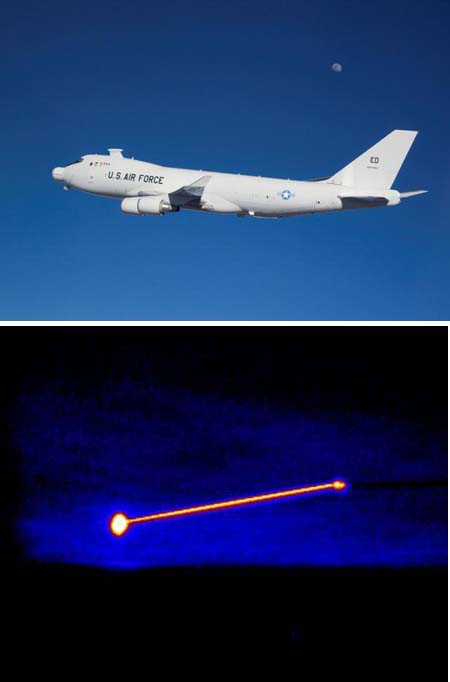 On Feb. 11 around 8:44 p.m. (PST), the Airborne Laser (ABL) successfully destroyed a boosting ballistic missile. The long-awaited shootdown, conducted at Point Mugu Naval Air Warfare Center’s Sea Range off the central California coast, serves as a “proof-of-concept demonstration for directed energy technology,” according to a Missile Defense Agency release. A threat-representative short-range ballistic missile launched from a mobile sea platform at 8:44 p.m. and, “within seconds,” the ABL used onboard sensors to detect the missile, a low-energy laser to track it, and another low-energy laser to measure and compensate for atmospheric disturbance, and then fired its megawatt-class high-energy laser to heat the target to “critical structural failure.” The entire engagement from missile launch to destruction took place “within two minutes.” The ABL is a modified Boeing 747-400F with a Northrop Grumman-designed high-energy laser, and Lockheed Martin-developed laser beam control/fire control system. (For ABL background, read The Airborne Laser Narrows Its Beam from the December 2006 Air Force Magazine) (Boeing release; Northrop Grumman release; Lockheed Martin release)
On Feb. 11 around 8:44 p.m. (PST), the Airborne Laser (ABL) successfully destroyed a boosting ballistic missile. The long-awaited shootdown, conducted at Point Mugu Naval Air Warfare Center’s Sea Range off the central California coast, serves as a “proof-of-concept demonstration for directed energy technology,” according to a Missile Defense Agency release. A threat-representative short-range ballistic missile launched from a mobile sea platform at 8:44 p.m. and, “within seconds,” the ABL used onboard sensors to detect the missile, a low-energy laser to track it, and another low-energy laser to measure and compensate for atmospheric disturbance, and then fired its megawatt-class high-energy laser to heat the target to “critical structural failure.” The entire engagement from missile launch to destruction took place “within two minutes.” The ABL is a modified Boeing 747-400F with a Northrop Grumman-designed high-energy laser, and Lockheed Martin-developed laser beam control/fire control system. (For ABL background, read The Airborne Laser Narrows Its Beam from the December 2006 Air Force Magazine) (Boeing release; Northrop Grumman release; Lockheed Martin release)
The rate of building B-21 bombers would speed up if the fiscal 2026 defense budget passes. But it remains unclear how much capacity would be added, and whether the Air Force would simply build the bombers faster, or buy more.
